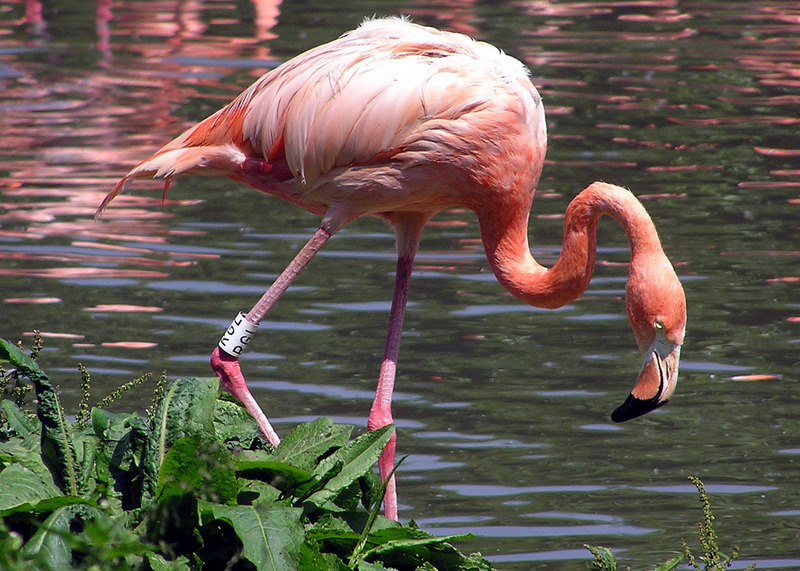Caribbean Flamingo (Phoenicopterus ruber) - Wiki Caribbean Flamingo
From Wikipedia, the free encyclopedia
Order: Phoenicopteriformes
Family: Phoenicopteridae
[Photo] Caribbean Flamingo (Phoenicopterus ruber) at Slimbridge Wildfowl and Wetlands Centre, Slimbridge, Gloucestershire, England. Taken by Adrian Pingstone (http://commons.wikimedia.org/wiki/User:Arpingstone) in June 2004 and released to the public domain.
The Caribbean Flamingo or American Flamingo (Phoenicopterus ruber) is a large species of flamingo closely related to the Greater Flamingo and Chilean Flamingo, with which it is sometimes considered conspecific. This article follows the treatment in Ibis (2002) 144 707-710.
The Caribbean Flamingo breeds in the Galapagos Islands, coastal Colombia and Venezuela and nearby islands, the Yucat??n Peninsula of Mexico, and in the northern Caribbean in the Bahamas, Hispaniola, Cuba and Turks and Caicos. Most sightings in southern Florida are usually considered to be escapees, although at least one bird banded as a chick in the Yucat??n Peninsula has been sighted in Everglades National Park, and others may be genuine wanderers from Cuba.
The habitat is similar to that of its relatives, including saline lagoons, mudflats and shallow brackish coastal or inland lakes. Like all flamingos, it lays a single chalky white egg on a mud mound, between May and August; incubation until hatching takes from 28 to 32 days; both parents brood the young for a period of up to 6 years when they reach sexual maturity. Their life expectancy of 40 years is one of the longest in birds.
The Caribbean Flamingo is 120???140 cm in length; males weigh 2.8 kg and females 2.2 kg. Most of their plumage is pink, giving rise to its earlier name of Rosy Flamingo and differentiating adults from the much paler European species. The wing coverts are red, and the primary and secondary flight feathers are black. It is the only flamingo which naturally inhabits North America.
The bill is pink with a restricted black tip, and the legs are entirely pink. The call is a goose-like honking.
The Caribbean Flamingo is one of the species to which the Agreement on the Conservation of African-Eurasian Migratory Waterbirds (AEWA) applies.
http://en.wikipedia.org/wiki/Caribbean_Flamingo
| The text in this page is based on the copyrighted Wikipedia article shown in above URL. It is used under the GNU Free Documentation License. You may redistribute it, verbatim or modified, providing that you comply with the terms of the GFDL. |
